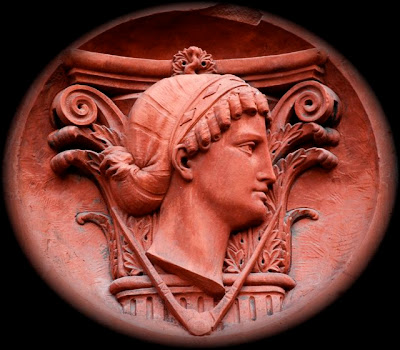Only “birds of a feather flock together,” so don’t lump the Magpie Mason with the culture vultures, but there are two events in Manhattan I must bring to your attention.
On Sunday, May 23 at 3 p.m., the Museum of Biblical Art will host the first in a series of “cross-cultural conversations... investigating questions of religious identity and meaning through the prism of Jewish and Christian art.” Titled One Stone Upon Another: The Temple of Jerusalem in Jewish and Christian Art, the lecture is open to the public.
MOBIA says:
“Robin Jensen, Luce Chancellor’s Professor of the History of Christian Art and Worship at Vanderbilt University; and Steven Fine, Professor of Jewish History at Yeshiva University and Director of the YU Center for Israel Studies, will look at early representations of the Temple of Jerusalem. Each a foremost expert on the ways that art was meaningful for the religious experience in antiquity, Fine and Jensen bring their cross-cultural conversation into the public domain, addressing profound questions of religious identity and meaning in late antiquity through the prisms of ancient Christian and Jewish art.
“The conversation will be guided by questions such as: How close were Christians and Jews in late antiquity? What were the borderlines that separated them, and in what ways did their shared focus upon the Bible distance and bring them closer to one another? What do ancient visual and literary sources – read together – tell us about how Jews viewed Christians; Christians viewed Jews; and each viewed Roman polytheism?”
Admission is free. To register for this event, call (212) 408-1500.
Admission to the museum also is free, and you’ll want to allow ample time to savor the exhibit titled Uneasy Communion: Jews, Christians, and the Altarpieces of Medieval Spain, which closes May 30.
Again, courtesy of MOBIA:
“This exhibition discusses the last two centuries of medieval Spanish history in the Crown of Aragon (the Kingdom of Aragon, the Kingdom of Valencia, and the region of Catalonia) from the vantage point of religious art, and demonstrates the documented cooperative relationship that existed between Christians and Jews who worked either independently or together to create art both for the Church and the Jewish community. Religious art was not created solely by members of the faith community it was intended to serve, but its production in the multi-cultural society of late medieval Spain was more complicated. Jewish and Christian artists worked together in ateliers producing both retablos (large multi-paneled altarpieces) as well as Latin and Hebrew manuscripts. Jews and conversos (Jews who had converted to Christianity) were painters and framers of retablos, while Christians illuminated the pages of Hebrew manuscripts.
“The exhibition tells not only the story of this fascinating moment of artistic collaboration, it also provides a glimpse into the lives of these communities which lived side by side. Images in some retablos reflect the hardships of Jewish life in the fourteenth and fifteenth centuries: conversions, forced sermons, disputations, the Inquisition, and charges of host desecration and blood libel. Other extraordinary paintings project a messianic view of a future in which Jews would join with Christians in one faith.
“The exhibition is accompanied by the publication edited by Vivian B. Mann, with essays by Marcus B. Burke, Carmen Laccara Ducay, Thomas F. Glick and Vivian B. Mann, which provide a fascinating study of the production of altarpieces in late medieval Spain and the artistic overlap between the Jewish and Christian communities that this industry spawned. Uneasy Communion: Jews, Christians, and the Altarpieces of Medieval Spain is published by D Giles Limited in association with the Museum of Biblical Art and is available at the MOBIA online Bookstore.”
Click here to see a slideshow of images from this exhibition.
Also closing at the end of the month is the exhibition at Poet’s House titled The Green Man.
Every thinking Freemason ought to know about the Green Man. His significance in architecture and symbolism merits your consideration.
Poet’s House says:
This series of paintings by British-born poet and painter Basil King depicts the Green Man, the pre-Christian archetypal figure of creation and the earth, emerging in the guise of British historical figures, such as Guy Fawkes and Walter Raleigh.
To close on a humorous note, take a few minutes to enjoy this footage of actor Bill Murray reading poetry to the operative builders who constructed the new Poet’s House in Battery Park City:






















































































